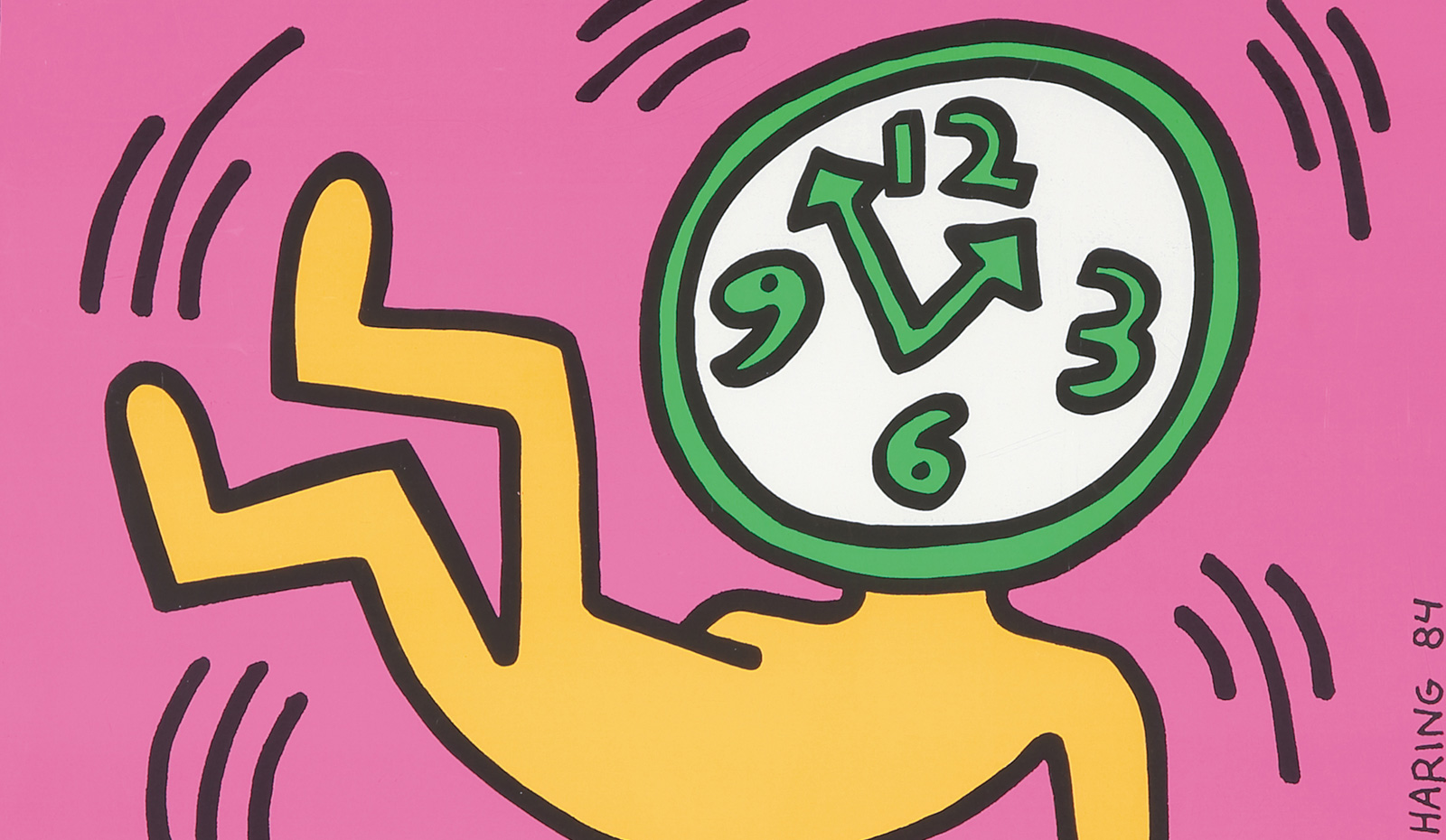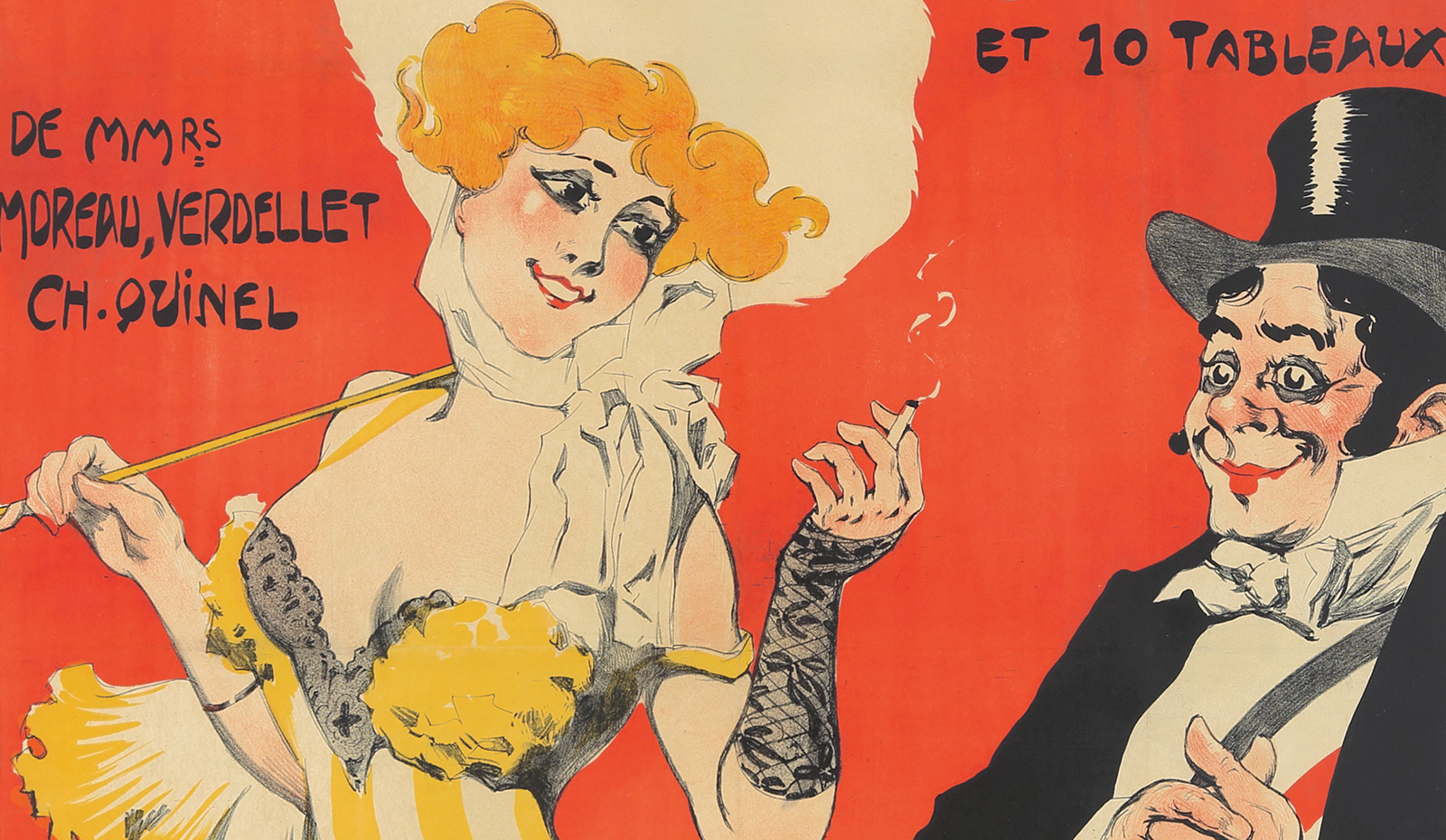Top Posters with Reserves of $1,000 and Under
Our 82nd Rare Posters Auction contains a number of fantastic designs that won’t break the bank. Preview our top posters with reserves of $1,000 and under before they go to auction on November 15.
28 1/2 x 40 1/4 in./72.3 x 102.2 cm
Est: $1,400 - $1,700
The dramatic scope of World War II called for a surge in American factory production. As more laborers were needed to fulfill these efforts, employers eased “the segregation policies that had previously kept African Americans out of many industrial workplaces. But as black workers poured into cities and factories they often met with resentment from white counterparts… Racial prejudice needed to be temporarily set aside to maximize production for the war effort. [This poster] shows two actual employees—a black man (Louis Ward) and a white man (Walter Shippe)—working together at a Republic Aircraft Corporation plant… The intent behind United We Win was to encourage all workers, regardless of race, religion, or ethnicity, to rise above their personal differences” (Weapons, p. 25). While the designer of this poster remains unknown, the photograph was taken by Alexander Liberman.
22 1/8 x 33 in./56.2 x 83.6 cm
Est: $1,000 - $1,200
Originally included in Bob Dylan’s Greatest Hits-Volume 1 album on vinyl, this image of the singer is possibly Glaser’s most iconic design. When speaking of it, the artist mentions being influenced by Duchamp and Islamic paintings, resulting in “a style some now consider peculiarly American” (Glaser, p. 50).
14 1/2 x 22 1/2 in./37 x 57.2 cm
Est: $1,200 - $1,500
There’s something somber—almost funereal—about this Campbell design for the November 1903 issue of Scribner’s. But without further details it’s difficult to say precisely what these two might be mourning. Perhaps it’s nothing more than the onset of winter making them less than peppy. But ennui becomes them, and no doubt once they begin to flip through the pages of their at-hand Scribner’s, their outlook will brighten considerably.
46 1/8 x 63 in./117 x 160 cm
Est: $1,200 - $1,500
This wry image of Mistinguett plays on her legendary performance style involving luxurious flirtation with the viewer. It’s also a testament to the seamless collaboration between the showgirl and her costume-designer artist, the young prodigy Charles Gesmar, who designed thousands of costumes and 55 posters for her. Note the identical hue of coral upon wrist-bauble, nails, and lips; the lapis lazuli upon her finger, and in her eye shadow; the emerald upon her ring finger, and in her eyes; the black pearls and Mistinguett’s mascara. Peek-a-boo, the colors say: I see you.
28 5/8 x 40 5/8 in./72.8 x 103.2 cm
Est: $1,200 - $1,500
In this silkscreen print, Yokoo creates a hypnotically balanced design for the “Japan Beckoning Cat Club,” filled with a nationalism not typically found in his designs. Officially titled “Hino Moto No Neko” (The Cat from the Sun), the design seemingly sets its sights more on the traditional celebration of Japanese heritage than it does on patronage. All the elements are clearly in place: the Hino Moto, or rising sun, that served as the Japanese flag prior to the armistice of World War II; the torii, archways of Shinto shrines, the national religion of Japan; and finally, the cat—specifically, the maneki nekko, or “Beckoning Cat,” a well known and collected embodiment of good luck. Combine these elements with the “Made in Japan” featured at the top center of the design and it becomes clear that there’s quite a bit more than the accumulation of good luck kitties being promoted, a fact plainly reinforced by the kanji slogans broadcasting positivist messages of health and prosperity.
24 x 17 1/2 in./61 x 44.4 cm
Est: $800 - $1,000
In 1983, Warhol created a variety of images for Perrier, each taking the product and elevating it through his signature use of silkscreen color-washing. “These posters were intended for publicity in bistros and cafés in France. They won the French poster Grand Prix in 1983, the only award Warhol ever received for his work as a poster artist” (Warhol Posters, p. 85). This is the fuchsia image in the smaller format.
29 x 42 1/4 in./73.8 x 107.4 cm
Est: $1,200 - $1,500
R.O. Blechman’s “New York at Night” is an elegant and refined depiction of the city that never sleeps. The buildings of midtown and lower Manhattan are gently outlined in black ink, while colored details draw attention to some of New York’s architectural wonders: Grand Central Station, the Empire State Building, and the Chrysler Building, their spires and facades glowing like jewels in the night. Blechman is an accomplished animator, illustrator, children’s book author, graphic novelist, and editorial cartoonist; he created 15 iconic covers for the New Yorker between 1974 and 1996. This is hand-signed by Blechman.
23 1/2 x 33 1/8 in./59.5 x 84 cm
Est: $1,000-$1,200
For international travelers in the late 20th century, these glimmering city lights sufficed to immediately evoke New York City. The iconic Twin Towers at the center draw us straight into lower Manhattan, where the lights of the Financial District capture and reflect the brilliant sunset. This poster by an anonymous designer is a dazzling testament to a New York that was.
27 5/8 x 39 1/4 in./70.2 x 99.6 cm
Est: $1,000 - $1,200
Borgoni offers us a peaceful vista from the cliffs of Taormina, the ancient Greek city on the east coast of Sicily. The old town, situated atop a very steep cliff 820 feet above the sea, provides the perfect panoramic vista of the town, the Ionian Sea, and the grand Mount Etna, which is the highest active volcano in Europe outside the Caucasus. Borgoni created a number of posters for the Italian Government Tourist Board ENIT, and all are equally resplendent.
24 1/2 x 39 1/2 in./62 x 100.5 cm
Est: $1,200-$1,500
Rasmussen, one of Denmark’s finest posterists, was as greatly involved with the Danish State Railway as Cassandre was with the French. All of his works for the DSB show a keen talent for dramatizing the ride as an adventure of rushing steel and converging perspectives. Here we are presented with one such design, executed primarily in somber blue, with the massive trestle supports creating an image of solidity, while the train glides by like a ghostly dark streak above. The Storstrøm Bridge connects Sjaelland Island (where Copenhagen is situated) with Falster Island, which has a ferry connection to Germany. This is the German-language version of the poster.
13 x 18 1/4 in./33.2 x 46.5 cm
Est: $1,000 - $1,200
For the 1897 May issue of Harper’s, Penfield employs no gimmicks or extraneous elements; rather, he gives us an effortlessly classy looking lady out on a stroll with her handsome greyhound. The blank background ties her to no specific location, implying that all smart ladies (and their canine companions) will enjoy this magazine’s issue.
25 1/8 x 39 3/4 in./63.8 x 101 cm
Est: $1,000 - $1,200
This is one of David Klein’s most celebrated posters, and the image itself is jubilant: the City of Light is ablaze with Klein’s stylized fireworks that mimic the illustrated showgirls of the Folies-Bergère in Belle Epoque posters.
23 3/8 x 32 5/8 in./59.2 x 83 cm
Est: $1,200-$1,500
“The Swiss watch manufacturer Swatch sponsored the first—and for six years the only—break-dance world championship. Swatch also commissioned the poster” (Haring Posters, p. 109). The Roxy, located in Manhattan’s Chelsea neighborhood, got its start in 1978 as a roller disco, earning the name the “Studio 54 of roller rinks.” In 1982, the space was revamped into a dance floor, and the venue became a hub for dance music, hip hop, punk, and DJ experimentation.
It’s better with a book.
Order the Rare Posters Auction catalogue now
for full details on all 500 lots

















